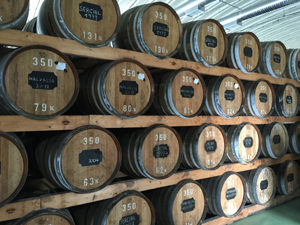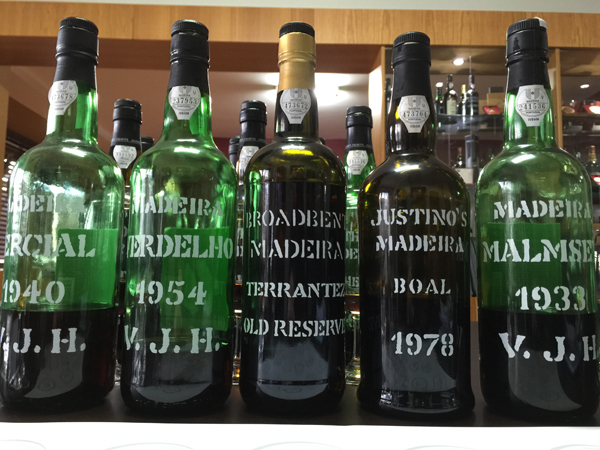On The GrapeVine: Island Heavyweights
The island of Madeira is revered worldwide for the wine named after it. Madeira is tiny: only 57 kilometres wide and 23 kilometres long. The landscape is steep, and rises swiftly from sea level to cloud-covered peaks of about 1,800 metres.
Blandy’s and Justino’s are the heavyweights among the island’s seven producers. They make more than half of the madeira.
Madeira is unique in the way it is made and stored. The winemaking process is an accident of history. Grape brandy was added to preserve wines on long sea journeys. During the seventeenth century, winemakers discovered the positive influence of the sun on wine shipped through the tropics. Intense heat gave a light and acidic wine depth of flavour and a pleasant burnt quality.
Madeira was subsequently stored in the holds of ships as ballast and send on round-trip journeys to develop flavours. This wine became known as vinho da roda, or “wine of

the round voyage”. Nowadays that process is replicated by storing wines in hot locations.
Most wine regions mature their wines in cool cellars, whereas Madeira wants to keep its wines warm. Part of the process is known as estufagem, “heating” in English, where pipes or jackets heat wine in tanks to develop flavours. Justino’s uses solar heating for the bulk of its 4,500 barrels and hopes soon to use solar for all heating.
Justino’s has the largest holdings of madeira on the island, and makes some superb wines. Julio Fernandes, commercial director, provided samples of 16 wines at the company’s headquarters near Funchal, the capital. These were a revelation for the purity and freshness of the younger wines to the elegance of the 10-year-old madeira, through to the superb colheitas of 1995, 1996 and 1998.

Colheitas come from a single year, but unlike vintage madeiras do not need to age for 20 years before being released. “These wines provide high quality wine from a single outstanding year but at an affordable price,” Fernandes said.




















